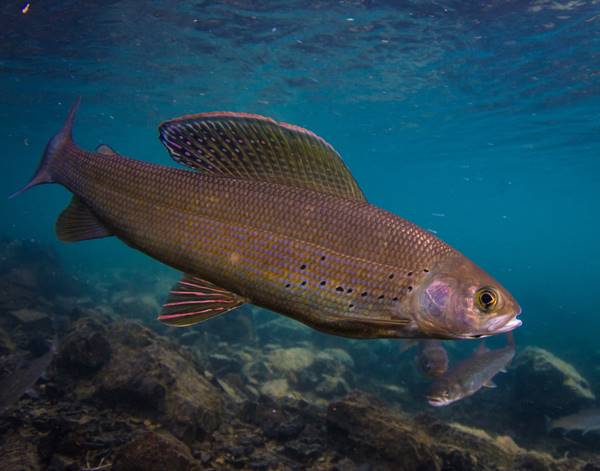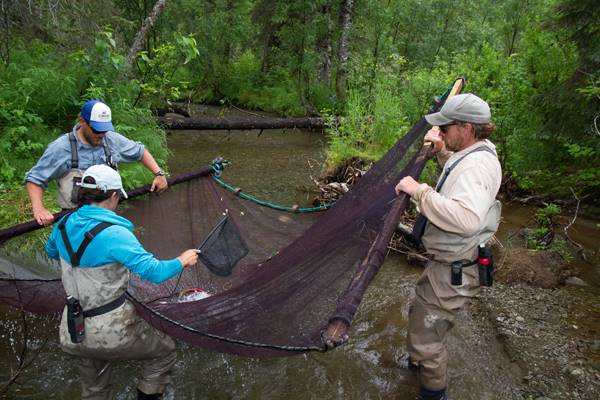Scientists show which rainbow trout and grayling are the best shrew-eaters in Alaska
In Southwest Alaska, fish scientists have been studying the diets of rainbow trout and Arctic grayling for years, looking to find how the fish are supported by food in coastal Alaskan streams. The fish appear to mostly rely on aquatic insects and salmon eggs. But they sometimes make a leap for something bigger, gobbling down shrews.
“For many of these fish, they rely on salmon eggs to put on growth,” said Pete Lisi, postdoctoral researcher at the University of Wisconsin – Madison who completed the work as a doctoral student at the University of Washington. But the spawning period for salmon is just a few weeks. “So we’re looking at periods of the year when salmon aren’t there.”
Lisi and crew captured the fish in seine nets, though they sometimes pulled out their rods and reels. “We capture some fish by hook and line,” said Lisi. “We go fishing for science.” From there, fish are anesthetized and their stomach contents flushed.
Other than eggs, the fish mostly rely on small insects to maintain their metabolism. Eating a shrew, which is much larger than an insect, can be a great benefit to fish looking for food.
But scientists have found that there’s a barrier keeping most fish from taking advantage of the valuable snack: their size. When fish reach certain sizes, says Lisi, they can do things they weren’t able to do as smaller fish. “Twelve inches is the size relevant to the gape, or the size of the mouth” fish need to be able to eat shrews, said Lisi. “Especially for a live animal that’s capable of escaping.”

The big-finned Arctic grayling were one of the species considered in the research. (Credit: Jonny Armstrong)
He and other researchers also discovered differences between the two species. In Arctic grayling, certain individuals are better at taking down shrews. These were about 20 inches and have an edge because they can run other fish off and swallow more shrews.
There were also rainbow trout that were better at getting shrews than others, but the researchers have less data to base findings on. “We’re just not that good at catching them. They’re harder to catch,” Lisi said.
“There are certainly reports and pictures showing that rainbows are better at it.” He noted that a rainbow trout was found not too far from their study area with 19 shrews in its belly.

The researchers caught fish in seine nets before flushing out their stomachs. (Credit: Jonny Armstrong)
The findings were exciting, Lisi says, because most of the time there aren’t any shrews in bellies of fish they catch. Along the way, his team has sampled at least 3,000 fish, only about a hundred of which were large enough to eat shrews. They’ve found large fish with no shrews in their bellies and other ones that had eaten many. By sampling so many fish, Lisi and others were able to spot the pattern and ask questions, like how does a fish catch a shrew in the first place? In this region, most of the shrews are terrestrial organisms and rarely enter the water to get food.
“We don’t know. We really only see what’s happened after (fish have eaten shrews),” said Lisi. “But I have noticed fly fishing in some of these holes during high shrew years that fish strike harder. So they might be lying and waiting for shrews to enter the water.”
The study describing the research is published in the journal Ecology of Freshwater Fish.



0 comments